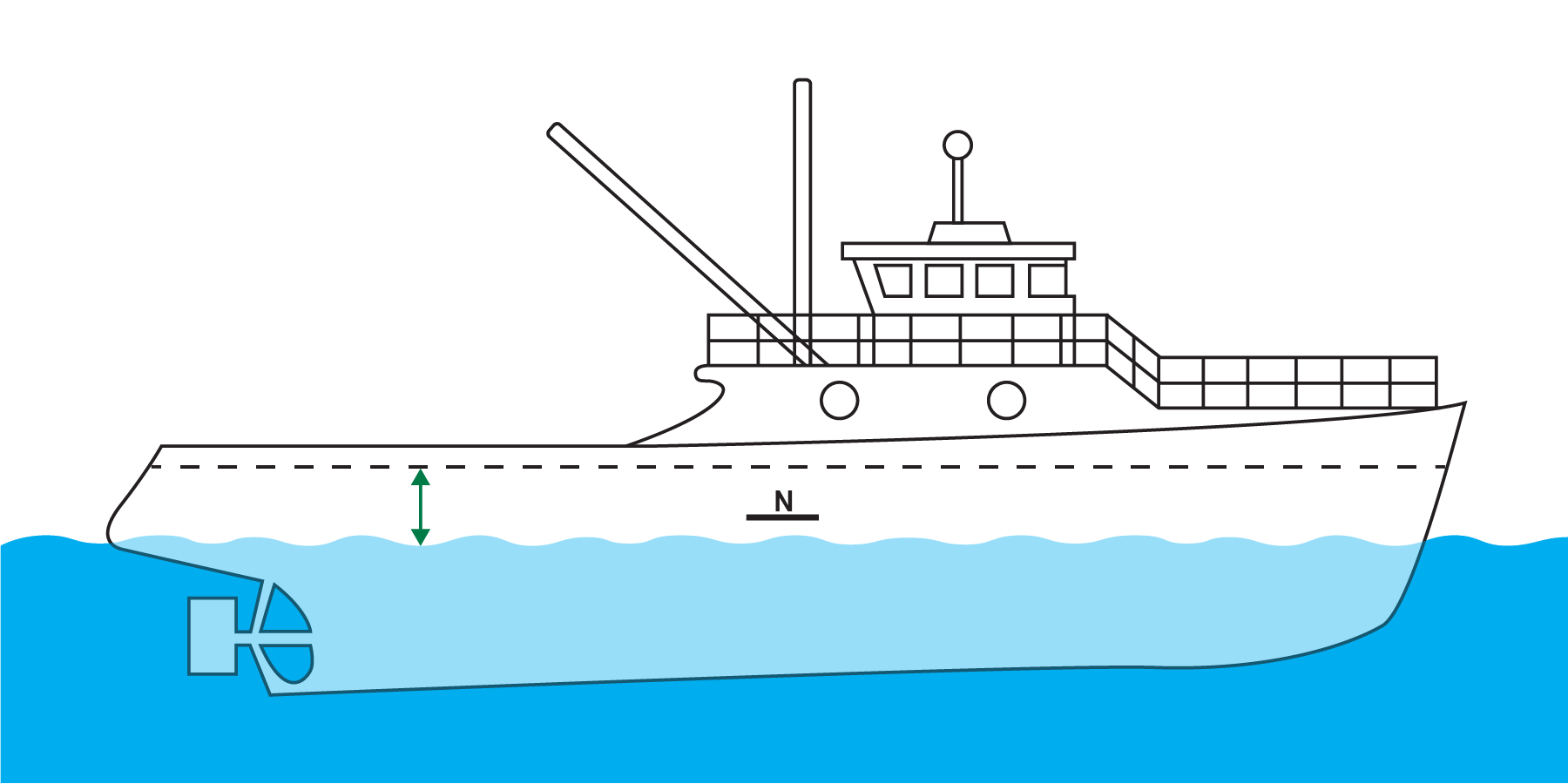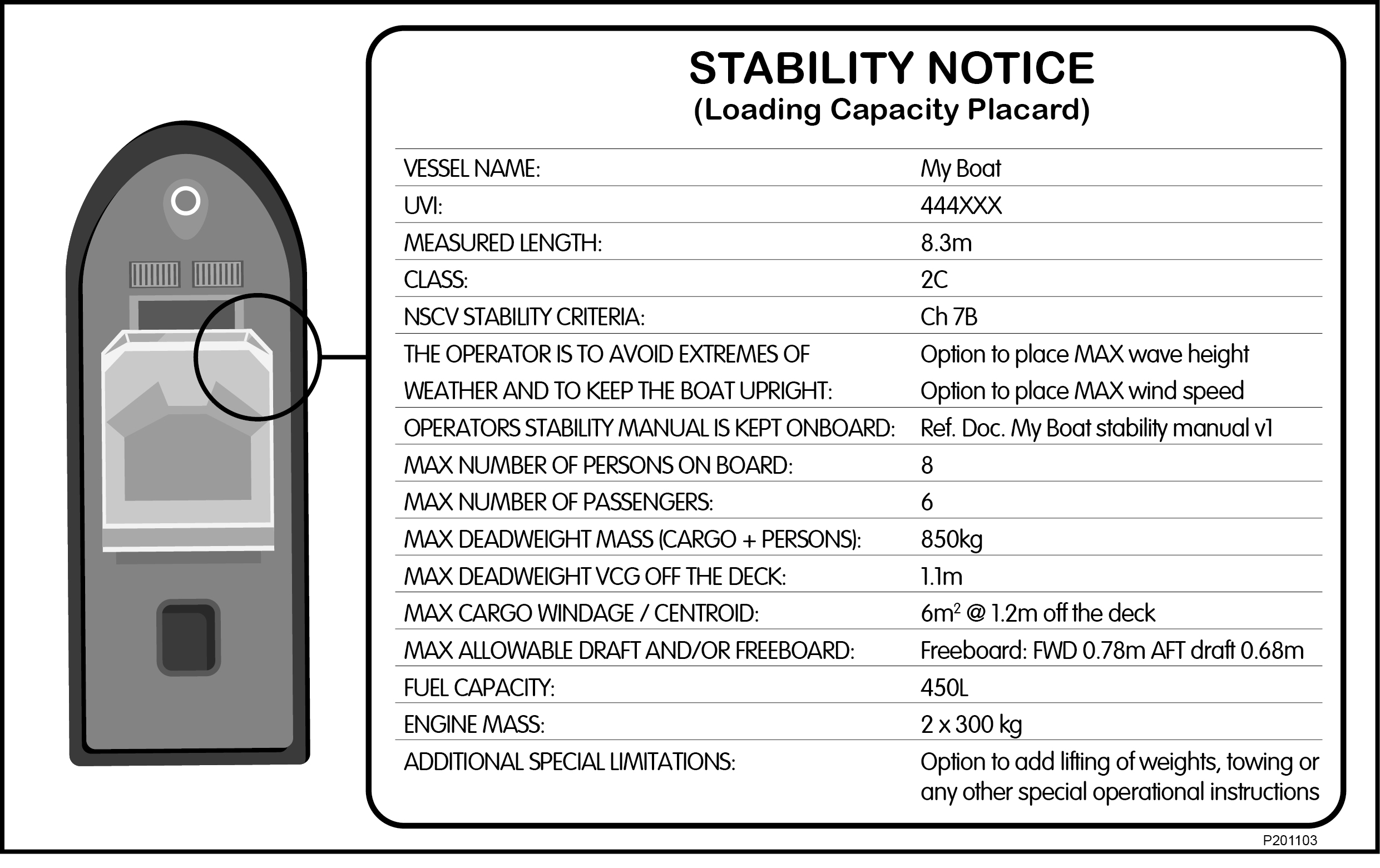The proposed new standard updates the requirements for watertight and weathertight integrity to reflect current technologies and to align with current international standards and best practice. It is a performance-based standard, with multiple options for compliance to address a number of safety issues with the current requirements, including over-loading.
New freeboard mark
New freeboard mark required for vessels ≥12 metres. (Not required for passenger vessels and larger workboats that are already required to have a load line).


Loading capacity placard may be used for vessels <12 metres
On smaller vessels, where a freeboard mark would not be seen on the hull, a maximum loading capacity placard may be used. The placard must be visible, preferably in the cockpit or near the main steering position in a prominent position.
The placard contains the same information that must already be carried under NSCV C6C: Stability tests and stability information.
- Alignment with international standards for windows and portlights, marking of doors, doors and hatches, valves and through-hull fittings and drain plugs.
- Rapid drainage requirements. Additional flexibility for designing and calculating rapid drainage. Multiple options for freeing ports and scuppers (drains) to provide rapid drainage for decks and enclosed spaces. A simple and practical option has been added for calculating freeing port areas for vessels <12 metres and a simplified time to drain option for vessels <24m in length.
- Improved and simplified approach to flush hatches. The current Generic Equivalent Solution 2017/19 has been incorporated into NSCV C2, with simplified tables and additional notes.
- Sliding wheelhouse door for fishing vessels ≥12 metres. New proposed requirement for some fishing vessels to have a sliding door to allow for escape in the event the vessel capsizes or is swamped.
- Clarification for:
- the assessment of watertight and weathertight components, to ensure consistency across the industry.
- installation testing and verification of watertight and weathertight components, to ensure consistency across the industry.
- material standards for seacocks and drain plugs for vessels <24 metres. Also allows the use of modern materials like polymer in certain places when manufactured to ISO 9093.